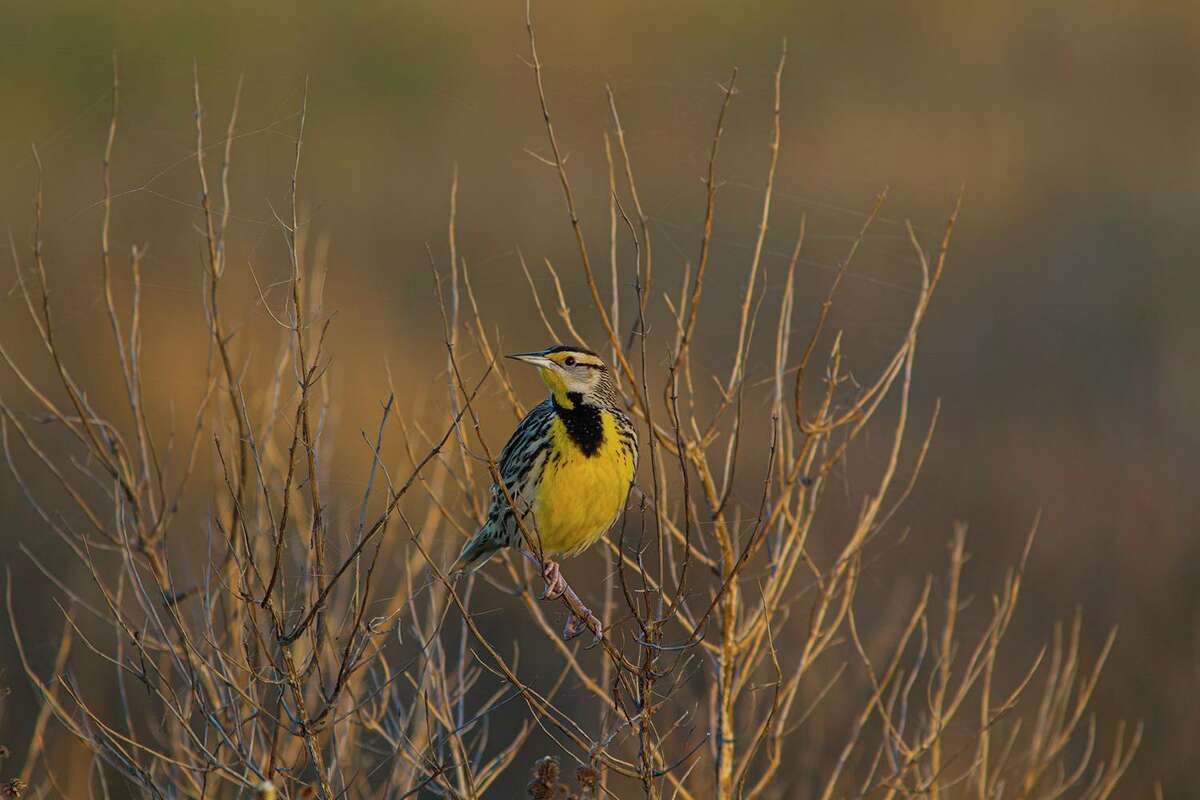Texas' eastern meadowlark's song is short but sweet
Gary Clark, Correspondent
May 11, 2023
4
 1of4Eastern meadowlarks are in the Icteridae family of blackbirds, orioles and grackles. They are prairie birds. 1of4Eastern meadowlarks are in the Icteridae family of blackbirds, orioles and grackles. They are prairie birds.
Kathy Adams Clark/KAC Productions 
The meadowlark’s reveling song rolls across prairies and fields with a fluted melody, as if singing "spring-of-the-year."
Early European settlers gazing over May’s serene meadows in the New World must have been thrilled to hear the song of a lark, reminding them of the melodies of skylarks in the Old World. No wonder settlers called the new bird a meadowlark.
A skylark flies high in the air and sings complex songs lasting two minutes. It’s in the Alaudidae bird family, which includes about 90 songbird species. But the only one in North America is the horned lark, which breeds in Texas and throughout North America.
A meadowlark perches on a bush, throws back its head, and sings a lilting three-syllable song lasting only two seconds. The bird is no lark.
It’s instead a New World species in the Icteridae family, which includes blackbirds and orioles, with similar long beaks that taper into a sharp point. A meadowlark employs its beak like a pair of closed scissors, stabbing it into the ground and then opening it to excavate a hole where it scrounges for subterranean insects and worms. The bird also uses its beak to pry apart vegetative ground litter to find insects.
Male meadowlarks have the unusual habit of singing at the periphery of breeding territories, instead of on their breeding grounds. They sing atop bushes, fence lines and even on the prairie floor, and their resonant songs roll across a prairie landscape.
Meadowlarks
Both eastern and western meadowlarks breed in Texas, and their ranges often overlap. Eastern meadowlarks breed primarily in the state's eastern half, and western meadowlarks breed in the state's western half, especially in the Panhandle. Both are nearly identical, but western meadowlarks usually have thinner black breast bands and lighter yellow underneath than eastern meadowlarks. They're best distinguished by song, with western meadowlark singing raspy, gargling notes sounding like "Texas-is-beautiful." Some meadowlarks breeding in northern states shift down to Texas for the winter.Meriwether Lewis of the Lewis and Clark Expedition (1804-1806) was the first to describe the difference between western and eastern meadowlarks.
Female meadowlarks respond to singing males by uttering high-pitched chattering notes tuned explicitly for their chosen mates. Each male recognizes which female is directing her chatter directly to him, and the pair then begin breeding on the male’s territory. They’ll work together to raise chicks throughout the breeding season.
The female weaves grasses to form a bowl-shaped nest, which she may top with a dome or lid. She’ll trample several pathways to the nest and may construct a grass tunnel as a secret passageway leading to the nest, deterring predators from pilfering eggs and chicks.
We might overlook meadowlarks, if it weren't for males singing from open perches. Their topsides of interwoven browns with blacks blends in with prairie grasses. A yellow chin, throat, breast and belly match the yellow prairie flowers, and a black V-shaped neck band sets off the yellow breast.
https://www.houstonchronicle.com/lifestyle/home-garden/article/meadowlarks-song-is-short-but-sweet-18084955.php |





 1of4Eastern meadowlarks are in the Icteridae family of blackbirds, orioles and grackles. They are prairie birds.
1of4Eastern meadowlarks are in the Icteridae family of blackbirds, orioles and grackles. They are prairie birds.
